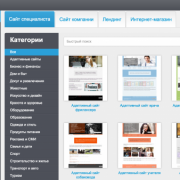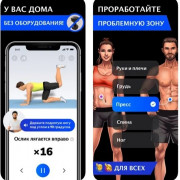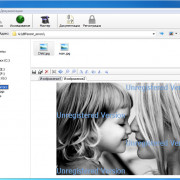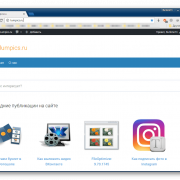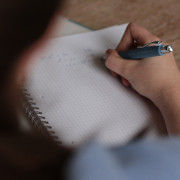Html тег
Содержание:
- HTML Tags
- HTML Теги
- Настройка виджета Button
- Использование методов виджета Button
- HTML Ссылки
- HTML Теги
- Text Buttons with Individual Backgrounds
- Как сделать кнопку в HTML?
- JavaScript
- Buttons
- Attributes
- More
- How To Create a Button Group
- Attributes
- How To Style Loading Buttons
- Кнопка Submit
- Images
- More Examples
- Виды кнопок html
- Время плавного перехода
- Menus
HTML Tags
<!—><!DOCTYPE><a><abbr><acronym><address><applet><area><article><aside><audio><b><base><basefont><bdi><bdo><big><blockquote><body><br><button><canvas><caption><center><cite><code><col><colgroup><data><datalist><dd><del><details><dfn><dialog><dir><div><dl><dt><em><embed><fieldset><figcaption><figure><font><footer><form><frame><frameset><h1> — <h6><head><header><hr><html><i><iframe><img><input><ins><kbd><label><legend><li><link><main><map><mark><meta><meter><nav><noframes><noscript><object><ol><optgroup><option><output><p><param><picture><pre><progress><q><rp><rt><ruby><s><samp><script><section><select><small><source><span><strike><strong><style><sub><summary><sup><svg><table><tbody><td><template><textarea><tfoot><th><thead><time><title><tr><track><tt><u><ul><var><video>
HTML Теги
<!—><!DOCTYPE><a><abbr><acronym><address><applet><area><article><aside><audio><b><base><basefont><bdi><bdo><big><blockquote><body><br><button><canvas><caption><center><cite><code><col><colgroup><data><datalist><dd><del><details><dfn><dialog><dir><div><dl><dt><em><embed><fieldset><figcaption><figure><font><footer><form><frame><frameset><h1> — <h6><head><header><hr><html><i><iframe><img><input><ins><kbd><label><legend><li><link><main><map><mark><menu><menuitem><meta><meter><nav><noframes><noscript><object><ol><optgroup><option><output><p><param><picture><pre><progress><q><rp><rt><ruby><s><samp><script><section><select><small><source><span><strike><strong><style><sub><summary><sup><svg><table><tbody><td><template><textarea><tfoot><th><thead><time><title><tr><track><tt><u><ul><var><video>
Настройка виджета Button
Виджет Button jQuery UI имеет ряд настраиваемых свойств, с помощью которых можно управлять способом создания результирующей кнопки. Перечень этих свойств приведен в таблице ниже:
| Свойство | Описание |
|---|---|
| disabled | Позволяет определить, отключена ли кнопка, или изменить ее состояние. Отключенной кнопке соответствует значение true. Состояние базового HTML-элемента игнорируется в jQuery UI |
| text | Позволяет определить, отображается ли текст кнопки, а также установить или отменить отображение текста. Если значение icons равно false, то эта опция игнорируется |
| icons | Позволяет определить, отображаются ли значки в тексте кнопки, а также задать отображаемые значки или отменить их отображение |
| label | Позволяет получить или изменить текст кнопки |
Описанные опции могут применяться двумя способами. Первый способ предполагает использование объекта отображения при вызове метода button(), как показано в примере ниже:
Здесь свойство label используется для указания текста, который должен отображаться на кнопке, а свойство disable — для отключения кнопки. Это соответствует стилю, с которым вы уже встречались при настройке Ajax-запросов, и его следует придерживаться при установке начальных конфигураций виджетов.
В примере выше продемонстрирован и второй способ, который используется для получения или задания новых значений свойств уже после создания экземпляра виджета. В данном случае также вызывается метод button(), но теперь с тремя аргументами. Первый аргумент — это имя метода option, второй — свойство, значение которого вы хотите изменить, а третий — новое значение, присваиваемое свойству. Здесь для свойства disabled устанавливается значение false, которое заменяет значение, установленное перед этим с помощью объекта отображения при создании экземпляра виджета.
Обе методики могут объединяться в одном вызове. В этом случае методу button() в качестве первого аргумента передается метод option, а в качестве второго объект отображения. Это позволяет указать сразу несколько опций при вызове метода button():
Для чтения значения параметра здесь используется все тот же немного «корявый» синтаксис. В данном случае метод button() вызывается с двумя аргументами. Первый из них — метод option, а второй — свойство, значение которого требуется получить. Эта инструкция считывает значение свойства disabled и выводит его на консоль:
Использование методов виджета Button
Кроме свойств, виджеты jQuery UI имеют также методы, которые можно использовать для управления виджетами после их создания. Собственно говоря, они не являются истинными методами, поскольку их вызов осуществляется несколько необычным способом — путем передачи имени метода в качестве аргумента методу button(), с чем мы уже сталкивались ранее, когда изменяли значения свойств кнопки с помощью метода option. Тем не менее мы будем называть их методами, поскольку именно такая терминология принята в jQuery UI.
Перечень доступных методов вместе с кратким описанием их назначения приведен в таблице ниже:
| Метод | Описание |
|---|---|
| button(«destroy») | Возвращает базовый элемент в первоначальное состояние, полностью удаляя из него функциональность виджета |
| button(«disable») | Отключает кнопку |
| button(«enable») | Включает кнопку |
| button(«option») | Устанавливает одно или несколько значений свойств |
| button(«refresh») | Обновляет состояние кнопки |
Удаление виджета
Метод destroy удаляет виджет jQuery UI из HTML-элемента, возвращая его в исходное состояние. Соответствующий пример приведен ниже:
В этом примере с помощью метода click() регистрируется обработчик щелчка на кнопке
Обратите внимание, что это не требует принятия каких-либо специальных мер в связи с использованием jQuery UI. Внутри функции-обработчика вызывается метод destroy, так что щелчок на кнопке приводит к тому, что она отключает саму себя
Включение и отключение кнопки
Методы enable и disable позволяют изменить состояние кнопки jQuery UI, как показано в примере ниже:
В этом сценарии в документ вставлен флажок, и с помощью метода change() зарегистрирована функция, которая будет вызываться каждый раз при снятии или установке флажка. Для изменения состояния кнопки в соответствии с состоянием флажка используются методы enable и disable. Результат представлен на рисунках:
Обновление состояния кнопки jQuery UI
Метод refresh обновляет состояние кнопки jQuery UI для учета любых возможных изменений базового HTML-элемента. Этой возможностью удобно пользоваться для отражения изменений, вносимых программным путем, как показано в примере ниже:
В этом примере флажок используется для управления добавлением и удалением атрибута disabled из HTML-элемента button. Поскольку jQuery UI не обеспечивает автоматического обнаружения этих изменений, то для синхронизации состояний используется метод refresh.
HTML Ссылки
HTML по АлфавитуHTML по КатегориямHTML Атрибуты ТеговHTML Атрибуты ГлобалHTML Атрибуты СобытийHTML ЦветаHTML ХолстыHTML Аудио / ВидеоHTML Наборы символовHTML DOCTYPEsHTML Кодирование URLHTML Языковые кодыHTML Коды странHTTP Ответы сервераHTTP МетодыPX в EM конвертерГорячие клавиши
HTML Теги
<!—>
<!DOCTYPE>
<a>
<abbr>
<acronym>
<address>
<applet>
<area>
<article>
<aside>
<audio>
<b>
<base>
<basefont>
<bdi>
<bdo>
<big>
<blockquote>
<body>
<br>
<button>
<canvas>
<caption>
<center>
<cite>
<code>
<col>
<colgroup>
<data>
<datalist>
<dd>
<del>
<details>
<dfn>
<dialog>
<dir>
<div>
<dl>
<dt>
<em>
<embed>
<fieldset>
<figcaption>
<figure>
<font>
<footer>
<form>
<frame>
<frameset>
<h1> — <h6>
<head>
<header>
<hr>
<html>
<i>
<iframe>
<img>
<input>
<ins>
<kbd>
<label>
<legend>
<li>
<link>
<main>
<map>
<mark>
<menu>
<menuitem>
<meta>
<meter>
<nav>
<noframes>
<noscript>
<object>
<ol>
<optgroup>
<option>
<output>
<p>
<param>
<picture>
<pre>
<progress>
<q>
<rp>
<rt>
<ruby>
<s>
<samp>
<script>
<section>
<select>
<small>
<source>
<span>
<strike>
<strong>
<style>
<sub>
<summary>
<sup>
<svg>
<table>
<tbody>
<td>
<template>
<textarea>
<tfoot>
<th>
<thead>
<time>
<title>
<tr>
<track>
<tt>
<u>
<ul>
<var>
<video>
<wbr>
Text Buttons with Individual Backgrounds
Text buttons with a specific background color on hover:
Example
.btn { border: none;
background-color: inherit; padding: 14px 28px;
font-size: 16px; cursor: pointer;
display: inline-block;}/*
Green */.success { color: green;}.success:hover {
background-color: #04AA6D; color: white;}/* Blue */.info {
color: dodgerblue;}.info:hover { background:
#2196F3; color: white;}/* Orange */.warning { color:
orange;}.warning:hover
{ background: #ff9800; color:
white;}/* Red */.danger { color: red;}.danger:hover {
background: #f44336; color: white;}/* Gray */.default
{ color: black;}.default:hover { background:
#e7e7e7;}
Go to our CSS Buttons Tutorial to learn
more about how to style buttons.
❮ Previous
Next ❯
Как сделать кнопку в HTML?
Итак, как я уже сказал, кнопки можно добавлять при помощи трех тегов, и . Каждый из этих тегов имеет свои особенности и атрибуты и используется для разных целей.
Сделать кнопку-ссылку при помощи тега , по сути, сводится к описанию его стилей в CSS. О стилях поговорим чуть позже.
Тег используется для создания кнопок, при нажатии на которые должны происходить какие-либо действия, например отправка формы, очистка формы, открытие модального окна, загрузка изображения и т.д.
Основными атрибутами таких кнопок являются:
Тип кнопки. Это необязательный параметр, и его можно пропустить. Если кнопка находится внутри формы и атрибут type отсутствует, браузер посчитает, что тип кнопки — submit и попытается отправить форму обработчику.
Несмотря на слухи, которые ходят в интернете, о том, что тег должен располагаться только внутри тегов , на самом деле это не так 🙂 Если вдруг по какой-то причине Вам нужно или хочется поместить свою кнопку вне формы, которую она должна отправлять/сбрасывать/еще-что-то-делать, просто используйте атрибут со значением соответствующим атрибуту этой формы.
Кроме того, у тега могут быть следующие атрибуты:
- — Автоматически устанавливает фокус браузера на кнопке при загрузке страницы
- — Кнопка заблокирована и нажатие на нее не выполняет никаких действий
- (только для типа submit) — адрес обработчика формы, на который отправляются данные из формы
- (только для типа submit) — Тип отправляемых данных. Может быть , ,
- (только для типа submit) — HTTP-метод, при помощи которого пересылаются данные. Может быть или
- (только для типа submit) — Отключает автоматическую валидацию введенных данных
- (только для типа submit) — Указывает на то, как выводится результат обработки формы. Может быть , , , или значение атрибута фрейма
- — Имя кнопки (можно использовать если, например, в форме есть несколько кнопок, которые ее отправляют, и обработчику нужно знать, какая из них нажата)
- — Значение кнопки (смысл примерно тот же, что и с name)
JavaScript
JS Array
concat()
constructor
copyWithin()
entries()
every()
fill()
filter()
find()
findIndex()
forEach()
from()
includes()
indexOf()
isArray()
join()
keys()
length
lastIndexOf()
map()
pop()
prototype
push()
reduce()
reduceRight()
reverse()
shift()
slice()
some()
sort()
splice()
toString()
unshift()
valueOf()
JS Boolean
constructor
prototype
toString()
valueOf()
JS Classes
constructor()
extends
static
super
JS Date
constructor
getDate()
getDay()
getFullYear()
getHours()
getMilliseconds()
getMinutes()
getMonth()
getSeconds()
getTime()
getTimezoneOffset()
getUTCDate()
getUTCDay()
getUTCFullYear()
getUTCHours()
getUTCMilliseconds()
getUTCMinutes()
getUTCMonth()
getUTCSeconds()
now()
parse()
prototype
setDate()
setFullYear()
setHours()
setMilliseconds()
setMinutes()
setMonth()
setSeconds()
setTime()
setUTCDate()
setUTCFullYear()
setUTCHours()
setUTCMilliseconds()
setUTCMinutes()
setUTCMonth()
setUTCSeconds()
toDateString()
toISOString()
toJSON()
toLocaleDateString()
toLocaleTimeString()
toLocaleString()
toString()
toTimeString()
toUTCString()
UTC()
valueOf()
JS Error
name
message
JS Global
decodeURI()
decodeURIComponent()
encodeURI()
encodeURIComponent()
escape()
eval()
Infinity
isFinite()
isNaN()
NaN
Number()
parseFloat()
parseInt()
String()
undefined
unescape()
JS JSON
parse()
stringify()
JS Math
abs()
acos()
acosh()
asin()
asinh()
atan()
atan2()
atanh()
cbrt()
ceil()
clz32()
cos()
cosh()
E
exp()
expm1()
floor()
fround()
LN2
LN10
log()
log10()
log1p()
log2()
LOG2E
LOG10E
max()
min()
PI
pow()
random()
round()
sign()
sin()
sinh()
sqrt()
SQRT1_2
SQRT2
tan()
tanh()
trunc()
JS Number
constructor
isFinite()
isInteger()
isNaN()
isSafeInteger()
MAX_VALUE
MIN_VALUE
NEGATIVE_INFINITY
NaN
POSITIVE_INFINITY
prototype
toExponential()
toFixed()
toLocaleString()
toPrecision()
toString()
valueOf()
JS OperatorsJS RegExp
Modifiers:
g
i
m
Groups:
(x|y)
Metacharacters:
.
\w
\W
\d
\D
\s
\S
\b
\B
\0
\n
\f
\r
\t
\v
\xxx
\xdd
\uxxxx
Quantifiers:
+
*
?
{X}
{X,Y}
{X,}
$
^
?=
?!
Properties:
constructor
global
ignoreCase
lastIndex
multiline
source
Methods:
compile()
exec()
test()
toString()
JS Statements
break
class
continue
debugger
do…while
for
for…in
for…of
function
if…else
return
switch
throw
try…catch
var
while
JS String
charAt()
charCodeAt()
concat()
constructor
endsWith()
fromCharCode()
includes()
indexOf()
lastIndexOf()
length
localeCompare()
match()
prototype
repeat()
replace()
search()
slice()
split()
startsWith()
substr()
substring()
toLocaleLowerCase()
toLocaleUpperCase()
toLowerCase()
toString()
toUpperCase()
trim()
valueOf()
Buttons
Both the w3-button class and the w3-btn
class add button-behavior to any HTML elements.
The most common elements to use are
<input type=»button»>, <button>, and <a>:
Example
<input class=»w3-button w3-black» type=»button» value=»Input Button»>
<button class=»w3-button w3-black»>Button Button</button>
<a href=»https://www.w3schools.com» class=»w3-button w3-black»>Link Button</a>
<input class=»w3-btn w3-black» type=»button» value=»Input Button»>
<button class=»w3-btn w3-black»>Button Button</button>
<a href=»https://www.w3schools.com» class=»w3-btn w3-black»>Link Button</a>
Attributes
| Attribute | Value | Description |
|---|---|---|
| autofocus | autofocus | Specifies that a button should automatically get focus when the page loads |
| disabled | disabled | Specifies that a button should be disabled |
| form | form_id | Specifies which form the button belongs to |
| formaction | URL | Specifies where to send the form-data when a form is submitted. Only for type=»submit» |
| formenctype | application/x-www-form-urlencoded multipart/form-data text/plain |
Specifies how form-data should be encoded before sending it to a server. Only for type=»submit» |
| formmethod | getpost | Specifies how to send the form-data (which HTTP method to use). Only for type=»submit» |
| formnovalidate | formnovalidate | Specifies that the form-data should not be validated on submission. Only for type=»submit» |
| formtarget | _blank _self _parent _topframename |
Specifies where to display the response after submitting the form. Only for type=»submit» |
| name | name | Specifies a name for the button |
| type | button reset submit |
Specifies the type of button |
| value | text | Specifies an initial value for the button |
More
Fullscreen VideoModal BoxesDelete ModalTimelineScroll IndicatorProgress BarsSkill BarRange SlidersTooltipsDisplay Element HoverPopupsCollapsibleCalendarHTML IncludesTo Do ListLoadersStar RatingUser RatingOverlay EffectContact ChipsCardsFlip CardProfile CardProduct CardAlertsCalloutNotesLabelsCirclesStyle HRCouponList GroupList Without BulletsResponsive TextCutout TextGlowing TextFixed FooterSticky ElementEqual HeightClearfixResponsive FloatsSnackbarFullscreen WindowScroll DrawingSmooth ScrollGradient Bg ScrollSticky HeaderShrink Header on ScrollPricing TableParallaxAspect RatioResponsive IframesToggle Like/DislikeToggle Hide/ShowToggle Dark ModeToggle TextToggle ClassAdd ClassRemove ClassActive ClassTree ViewRemove PropertyOffline DetectionFind Hidden ElementRedirect WebpageZoom HoverFlip BoxCenter VerticallyCenter Button in DIVTransition on HoverArrowsShapesDownload LinkFull Height ElementBrowser WindowCustom ScrollbarHide ScrollbarShow/Force ScrollbarDevice LookContenteditable BorderPlaceholder ColorText Selection ColorBullet ColorVertical LineDividersAnimate IconsCountdown TimerTypewriterComing Soon PageChat MessagesPopup Chat WindowSplit ScreenTestimonialsSection CounterQuotes SlideshowClosable List ItemsTypical Device BreakpointsDraggable HTML ElementJS Media QueriesSyntax HighlighterJS AnimationsJS String LengthJS ExponentiationJS Default ParametersGet Current URLGet Current Screen SizeGet Iframe Elements
How To Create a Button Group
Step 1) Add HTML:
<div class=»btn-group»> <button>Apple</button>
<button>Samsung</button> <button>Sony</button></div>
Step 2) Add CSS:
.btn-group button { background-color: #04AA6D; /* Green
background */ border: 1px solid green; /* Green border
*/ color: white; /* White text */ padding: 10px
24px; /* Some padding */ cursor: pointer; /*
Pointer/hand icon */ float: left; /* Float the
buttons side by side */}.btn-group button:not(:last-child) { border-right: none; /* Prevent double borders */}/* Clear floats (clearfix hack) */.btn-group:after {
content: «»; clear: both; display:
table;}/* Add a background color on hover */.btn-group button:hover { background-color: #3e8e41;}
Attributes
Attributes can be added to an HTML element to provide more information about how the element should appear or behave.
The element accepts the following attributes.
| Attribute | Description |
|---|---|
| Automatically gives focus to this control when the page loads. This allows the user to start using the control without having to select it first. There must not be more than one element in the document with the autofocus attribute specified.
This is a boolean attribute. If the attribute is present, its value must either be the empty string or a value that is an ASCII case-insensitive match for the attribute’s canonical name, with no leading or trailing whitespace (i.e. either or ). Possible values: |
|
| Disables the control. Therefore, if the user tries to use the control, nothing will happen.
This is a boolean attribute. If the attribute is present, its value must either be the empty string or a value that is an ASCII case-insensitive match for the attribute’s canonical name, with no leading or trailing whitespace (i.e. either or ). Possible values: |
|
| Specifies the ID of a form to which this control belongs.
Possible values: |
|
| Specifies the URL of the file that will process the control when submitted. | |
| Specifies the content type used to encode the form data set when it’s submitted to the server.
Possible values:
|
|
| Specifies the HTTP method to use when the control is submitted.
Possible values:
|
|
| Specifies that the form is not to be validated during submission.
This is a boolean attribute. If the attribute is present, its value must either be the empty string or a value that is an ASCII case-insensitive match for the attribute’s canonical name, with no leading or trailing whitespace (i.e. either or ). Possible values: |
|
| Specifies the browsing context to load the destination indicated in the attribute.
Possible values: |
|
| If the attribute has a value of , the attribute must be provided in order to specify the element’s menu. The value must be the ID of a element in the same home subtree whose attribute is in the popup menu state.
The attribute can only be used when the attribute has a value of . |
|
| Assigns the name of the control. | |
| Specifies the type of button.
Possible values:
|
|
| Assigns an initial value to the control. A button (and its value) is only included in the form submission if the button itself was used to initiate the form submission. |
Global Attributes
The following attributes are standard across all HTML elements. Therefore, you can use these attributes with the tag , as well as with all other HTML tags.
For a full explanation of these attributes, see HTML 5 global attributes.
Event Handlers
Event handler content attributes enable you to invoke a script from within your HTML. The script is invoked when a certain «event» occurs. Each event handler content attribute deals with a different event.
Most event handler content attributes can be used on all HTML elements, but some event handlers have specific rules around when they can be used and which elements they are applicable to.
For more detail, see HTML event handler content attributes.
How To Style Loading Buttons
Step 1) Add HTML:
Add an icon library, such as Font Awesome, and append icons to HTML buttons:
Example
<!— Add icon library —><link rel=»stylesheet» href=»https://cdnjs.cloudflare.com/ajax/libs/font-awesome/4.7.0/css/font-awesome.min.css»><!— Add font awesome icons to buttons (note that the fa-spin class
rotates the icon) —><button class=»buttonload»> <i class=»fa fa-spinner fa-spin»></i>Loading
</button><button class=»buttonload»> <i class=»fa fa-circle-o-notch
fa-spin»></i>Loading</button><button class=»buttonload»> <i
class=»fa fa-refresh fa-spin»></i>Loading</button>
Step 2) Add CSS:
Example
/* Style buttons */.buttonload {
background-color: #04AA6D; /* Green background */
border: none; /* Remove borders */ color: white; /*
White text */ padding: 12px 16px; /* Some padding */ font-size: 16px /* Set a font size */
}
Tip: Go to our Icons Tutorial to learn more about icons.
Tip: Go to our How To — CSS Loader to learn how to create a loader with CSS (without an icon library).
Go to our CSS Buttons Tutorial to learn
more about how to style buttons.
❮ Previous
Next ❯
Кнопка Submit
Для отправки данных на сервер предназначена специальная кнопка Submit. Её вид ничем не отличается от обычных кнопок, но при нажатии на нее происходит выполнение серверной программы, указанной атрибутом action элемента <form>. Эта программа, называемая еще обработчиком формы, получает данные введённые пользователем в полях формы, производит с ними необходимые манипуляции, после чего возвращает результат в виде HTML-документа. Что именно делает обработчик, зависит от автора сайта, например, подобная технология применяется при создании опросов, форумов, тестов и многих других вещей.
Синтаксис создания кнопки Submit зависит от используемого элемента <input> или <button>.
Атрибуты те же, что и у рядовых кнопок (пример 3).
Пример 3. Отправка данных на сервер
<!DOCTYPE html>
<html>
<head>
<meta charset=»utf-8″>
<title>Кнопка</title>
</head>
<body>
<form>
<p><input name=»login»></p>
<p><input type=»submit»></p>
</form>
</body>
</html>
Атрибут name для этого типа кнопки можно не писать. Если не указать значение value, то браузер самостоятельно добавит текст, он различается в зависимости от браузера. Так, Firefox пишет «Отправить запрос», IE — «Подача запроса», Opera и Chrome — «Отправить». Сам текст надписи никак на функционал кнопки не влияет.
Images
SlideshowSlideshow GalleryModal ImagesLightboxResponsive Image GridImage GridTab GalleryImage Overlay FadeImage Overlay SlideImage Overlay ZoomImage Overlay TitleImage Overlay IconImage EffectsBlack and White ImageImage TextImage Text BlocksTransparent Image TextFull Page ImageForm on ImageHero ImageBlur Background ImageChange Bg on ScrollSide-by-Side ImagesRounded ImagesAvatar ImagesResponsive ImagesCenter ImagesThumbnailsBorder Around ImageMeet the TeamSticky ImageFlip an ImageShake an ImagePortfolio GalleryPortfolio with FilteringImage ZoomImage Magnifier GlassImage Comparison SliderFavicon
More Examples
Example
Use CSS to style buttons:
<!DOCTYPE html><html><head><style>.button {
border: none; color: white; padding: 15px 32px;
text-align: center; text-decoration: none; display:
inline-block; font-size: 16px; margin: 4px 2px;
cursor: pointer;}.button1 {background-color:
#4CAF50;} /* Green */.button2 {background-color: #008CBA;} /* Blue */
</style></head><body><button class=»button
button1″>Green</button><button class=»button button2″>Blue</button></body></html>
Example
Use CSS to style buttons (with hover effect):
<!DOCTYPE html><html><head><style>.button {
border: none; color: white; padding: 16px 32px;
text-align: center; text-decoration: none; display:
inline-block; font-size: 16px; margin: 4px 2px;
transition-duration: 0.4s; cursor: pointer;}.button1 {
background-color: white; color: black; border: 2px
solid #4CAF50;}.button1:hover { background-color: #4CAF50;
color: white;}.button2 { background-color: white; color:
black; border: 2px solid #008CBA;}.button2:hover {
background-color: #008CBA; color: white;}</style></head><body>
<button class=»button button1″>Green</button><button class=»button
button2″>Blue</button></body></html>
Виды кнопок html
1. Кнопка-ссылка HTML
Кнопка со ссылкой HTML (например, кнопка наверх для сайта html или кнопка назад html) может быть создана с помощью ссылок «якорей». Обычный «якорь» имеет следующий вид:
Такой «якорь» невидим и может быть поставлен в любом месте, в котором вы считаете нужным. Для того чтобы перейти к «якорю», используется следующая команда:
<a href="#имя якоря">название кнопки</a>
Нажатие на название кнопки, моментально переводит курсор к «якорю». Допустим, нам нужно, чтобы внизу сайта стояла кнопка перехода на начало, а в начале – для перехода вниз:
<!DOCTYPE html>
<html>
<head>
<title>Якорь</title>
</head>
<body>
<form>
<a name="top"></a>
<p><a href="#end">вниз</a></p>
…
<p><a href="#top">вверх</a></p>
…
<a name="end"></a>
</form>
</body>
</html>
Выглядит это следующим образом:

2. Кнопка Submit
Кнопки типа Submit существуют для отправки информации, введённой посетителем сайта, на сервер. Например, простейшая организация ввода пароля выглядит так:
<p><input name="login"></p> <p><input type="submit"></p>
3. Кнопка Reset
Кнопки типа Reset предназначены для обновления данных форм (возврата их в первоначальное состояние). Для того чтобы создать такую кнопку, следует использовать следующий код:
<input type="reset" value="Название кнопки">
4. HTML кнопка с картинкой
В HTML кнопки можно украшать какими-либо картинками. Для этого достаточно использовать следующий код:
<input type="image" src="ссылка на картинку">"
Кнопка с картинкой и текстом:
<button> <img alt="" src="ссылка на картинку" style="vertical-align:middle" />Нажмите, чтобы посмеяться</button>
Например:

Таким образом, при создании кнопок HTML можно проявить свою выдумку: любые дизайнерские фантазии реализуются написанием достаточно простого кода.
Удачи!
АРАлина Рыбакавтор
Время плавного перехода
Свойство transition-duration добавляет временные рамки CSS изменениям. Стили кнопки без плавного перехода моментально меняются на стили псевдокласса :hover, что может отпугнуть пользователя. В следующем примере стиль кнопки плавно меняется (за 0.5 с): на :hover:
.color-change {
border-radius: 5px;
font-size: 20px;
padding: 14px 80px;
cursor: pointer;
color: #fff;
background-color: #00A6FF;
font-size: 1.5rem;
font-family: 'Roboto';
font-weight: 100;
border: 1px solid #fff;
box-shadow: 2px 2px 5px #AFE9FF;
transition-duration: 0.5s;
-webkit-transition-duration: 0.5s;
-moz-transition-duration: 0.5s;
}
.color-change:hover {
color: #006398;
border: 1px solid #006398;
box-shadow: 2px 2px 20px #AFE9FF;
}
А смотрится это так:
Код для плавных переходов сложный и старые браузеры по-разному выполняют анимацию. Поэтому нужно добавить префиксы для старых браузеров:
transition-duration: 0.5s /* Обычная запись, работает во всех современных браузерах*/ -webkit-transition-duration: 0.5s; /* Помогает некоторым версиям safari, chrome и android */ -moz-transition-duration: 0.5s; /* для firefox */
Menus
Icon BarMenu IconAccordionTabsVertical TabsTab HeadersFull Page TabsHover TabsTop NavigationResponsive TopnavNavbar with IconsSearch MenuSearch BarFixed SidebarSide NavigationResponsive SidebarFullscreen NavigationOff-Canvas MenuHover Sidenav ButtonsSidebar with IconsHorizontal Scroll MenuVertical MenuBottom NavigationResponsive Bottom NavBottom Border Nav LinksRight Aligned Menu LinksCentered Menu LinkEqual Width Menu LinksFixed MenuSlide Down Bar on ScrollHide Navbar on ScrollShrink Navbar on ScrollSticky NavbarNavbar on ImageHover DropdownsClick DropdownsCascading DropdownDropdown in TopnavDropdown in SidenavResp Navbar DropdownSubnavigation MenuDropupMega MenuMobile MenuCurtain MenuCollapsed SidebarCollapsed SidepanelPaginationBreadcrumbsButton GroupVertical Button GroupSticky Social BarPill NavigationResponsive Header
